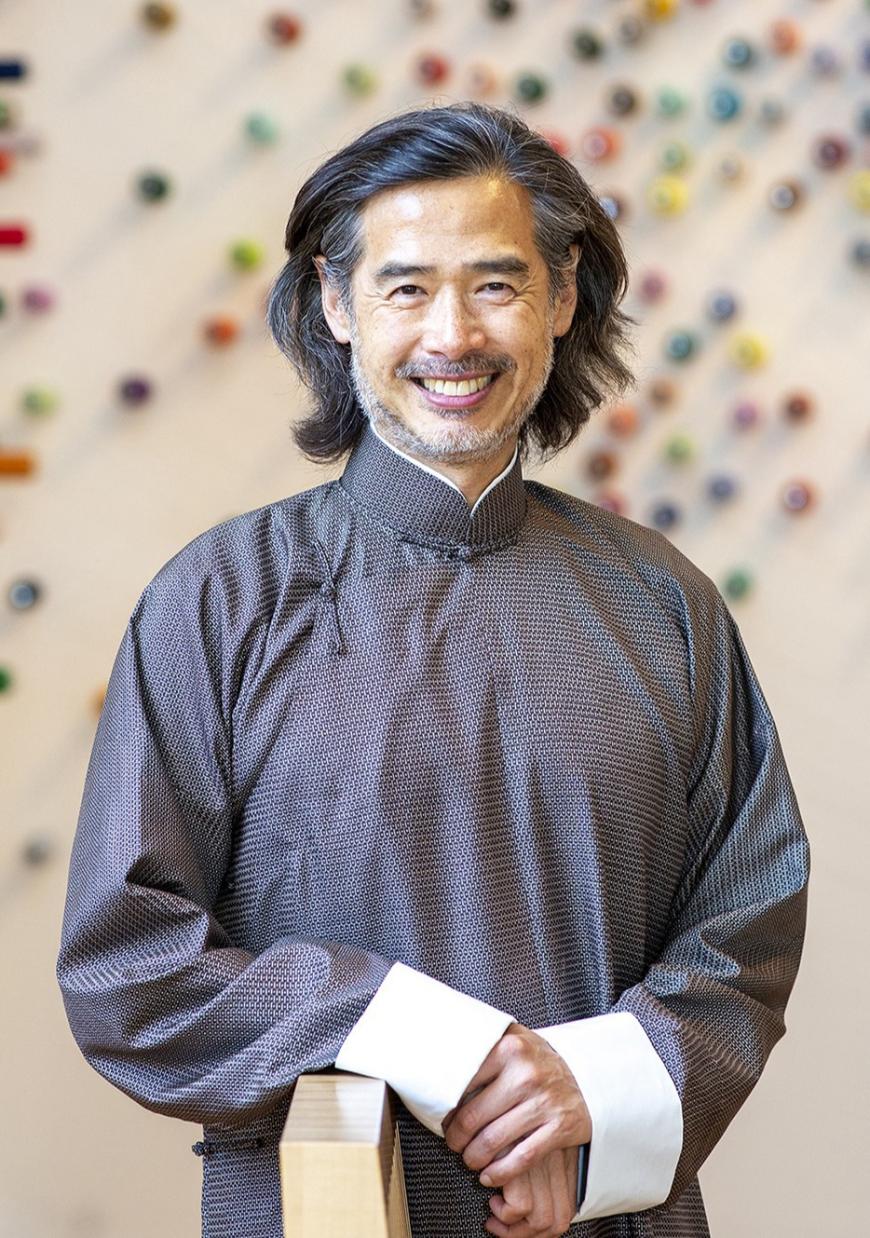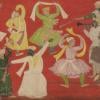
With his work, Taiwanese American artist Lee Mingwei, who attended California College of the Arts (back when it was California College of Arts and Crafts), explores how art can connect and heal. In his new show at the de Young Museum, Rituals of Care, which runs through July 7, his projects created between 1995 and 2024 do just that.
One project encourages museumgoers to write a letter to someone of things left unsaid. Another asks visitors to bring in ripped or torn clothing to be repaired, using that as an opportunity to connect with the person mending the item. And another has an opera singer offering to perform Franz Schubert lieder for museumgoers. This last idea was inspired by Mingwei’s mother playing these songs for him as a little boy; he did the same for her years later when she was recovering from surgery.
Then there’s the newest work, commissioned by the Fine Arts Museums of San Francisco, Chaque souffle une danse (Each breath a dance), on view for free, though tickets are required, at San Francisco’s Minnesota Street Project Foundation April 5 – May 5, with a film presentation at the de Young April 9 – July 7.

During the COVID-19 pandemic, when simply breathing seemed dangerous and a nine-minute video of a police officer choking the breath out of George Floyd sparked worldwide protests against police violence, the act of inhaling and exhaling was on Mingwei’s mind. As a child in Taiwan, he studied with a Buddhist monk every summer, so breath as it related to meditation was nothing new to him.
Amid the pandemic, Mingwei started practicing deep, tranquil breathing every afternoon, and at the end of each session, he would watch the sun set and do what he called “breath drawings,” exhaling onto droplets of ink and moving them across alabaster slabs. In Chaque souffle une danse, there will be a circle of 60 metal and wood candlestands, each with one of these drawings. A dancer enters and, moving slowly, lights a candle by each drawing. Once they are all lit, the dancer, moving just as slowly, again goes to each one and extinguishes the flame. Throughout the 45-minute performance, the exhibition space will flicker between darkness and illumination.
Mingwei wanted to include such opposites because his work is about tension, he said in an interview at the de Young.

“One day, I held up the alabaster and the black-ink breath work on it, and I was looking at it during sunset, and the light just penetrated in such a beautiful way. I thought, ‘Oh, it would be so beautiful if we could have candle behind it.’ But then I realized if we had a candle, it would just look pretty,” he said. “I’m looking for the tension, and the tension is when someone comes in and blows out the candle or lights the candle, and that is where this whole thing became alive.”
Janna Keegan, who curated Rituals of Care with Claudia Schmuckli, was also present at the de Young interview and added more context.
“I think there’s a story you told me about living in the monastery as a child and cleaning with the breath and your breath [being] something that is so precious,” Keegan said to Mingwei. “It’s one of the only things you could use to honor and clean.”
The performance couldn’t be at the de Young because of the candles’ flames, so the museum partnered with the MSP Foundation. Chaque souffle une danse will be held in a former popcorn factory at 1201 Minnesota Street that the MSP Foundation acquired and turned into a video screening gallery last May, adding it to their two other gallery spaces and artist studios on that block.
Rachel Sample, director of the foundation, said that the new 20,000-square-foot gallery is made to house events that would have a hard time finding a place anywhere else, and she is thrilled to have Mingwei’s work there. The piece is welcoming while at the same time capturing the discord and emotion of the pandemic and just how fraught breathing seemed then, she thinks.
“The way that [Mingwei] works is so inviting to the visitor and contains both the depth of what he’s trying to translate but also the experience of the sort of joy and delight of something that’s immersive and visceral,” Sample said. “That’s very in line with each of the pieces that we’ve put on at 1201, and this showcases what that space can provide for an artist, their practice, their program, and our visitors. I think audiences are going to be really amazed. To provide any art experience of this caliber free to the public is pretty phenomenal.”




